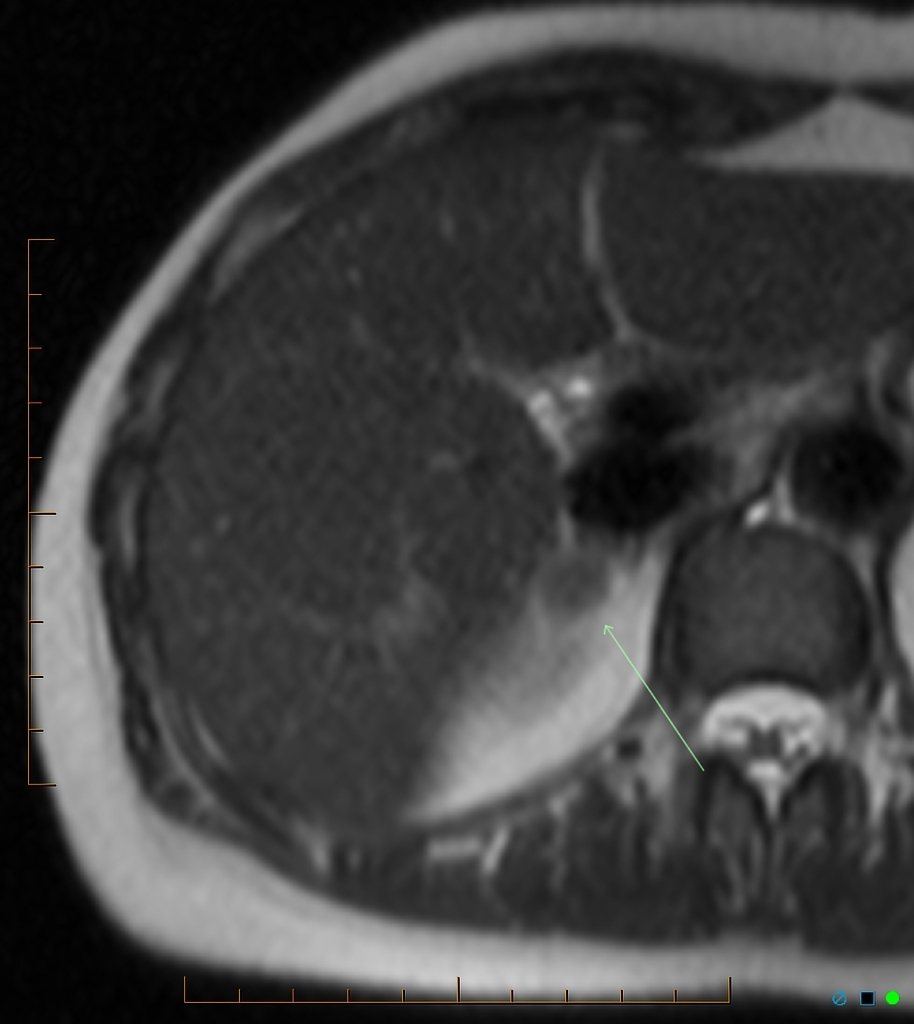Primary hyperaldosteronism MRI Findings: Difference between revisions
Jump to navigation
Jump to search
No edit summary |
No edit summary |
||
| Line 6: | Line 6: | ||
MRI may be used for diagnosing adrenal adenomas when the attenuation on CT is <30 HU. | MRI may be used for diagnosing adrenal adenomas when the attenuation on CT is <30 HU. | ||
==MRI== | ==MRI== | ||
*Chemical shift imaging on MRI is the most reliable for diagnosis especially when CT findings are unrewarding. | *Chemical shift imaging on MRI is the most reliable for diagnosis especially when CT findings are unrewarding.<ref name="pmid24621966">{{cite journal |vauthors=Ctvrtlik F, Koranda P, Tichy T |title=Adrenal disease: a clinical update and overview of imaging. A review |journal=Biomed Pap Med Fac Univ Palacky Olomouc Czech Repub |volume=158 |issue=1 |pages=23–34 |year=2014 |pmid=24621966 |doi=10.5507/bp.2014.010 |url=}}</ref><ref name="pmid24796926">{{cite journal |vauthors=Lim V, Guo Q, Grant CS, Thompson GB, Richards ML, Farley DR, Young WF |title=Accuracy of adrenal imaging and adrenal venous sampling in predicting surgical cure of primary aldosteronism |journal=J. Clin. Endocrinol. Metab. |volume=99 |issue=8 |pages=2712–9 |year=2014 |pmid=24796926 |doi=10.1210/jc.2013-4146 |url=}}</ref> | ||
*MRI is useful for adrenal masses with a signal intensity <30 HU. | *MRI is useful for adrenal masses with a signal intensity <30 HU. | ||
*Signal dropout on out-of-phase imaging for: | *Signal dropout on out-of-phase imaging for: | ||
Revision as of 17:04, 20 July 2017
|
Primary hyperaldosteronism Microchapters |
|
Differentiating Primary Hyperaldosteronism from other Diseases |
|---|
|
Diagnosis |
|
Treatment |
|
Case Studies |
|
Primary hyperaldosteronism MRI Findings On the Web |
|
American Roentgen Ray Society Images of Primary hyperaldosteronism MRI Findings |
|
Risk calculators and risk factors for Primary hyperaldosteronism MRI Findings |
Editor-In-Chief: C. Michael Gibson, M.S., M.D. [1];Associate Editor(s)-in-Chief: Syed Hassan A. Kazmi BSc, MD [2]
Overview
MRI may be used for diagnosing adrenal adenomas when the attenuation on CT is <30 HU.
MRI
- Chemical shift imaging on MRI is the most reliable for diagnosis especially when CT findings are unrewarding.[1][2]
- MRI is useful for adrenal masses with a signal intensity <30 HU.
- Signal dropout on out-of-phase imaging for:
- 10-30 HU on CT is 89% sensitive and 100% specific
- 10-20 HU on CT is 100% sensitive and 100% specific
References
- ↑ Ctvrtlik F, Koranda P, Tichy T (2014). "Adrenal disease: a clinical update and overview of imaging. A review". Biomed Pap Med Fac Univ Palacky Olomouc Czech Repub. 158 (1): 23–34. doi:10.5507/bp.2014.010. PMID 24621966.
- ↑ Lim V, Guo Q, Grant CS, Thompson GB, Richards ML, Farley DR, Young WF (2014). "Accuracy of adrenal imaging and adrenal venous sampling in predicting surgical cure of primary aldosteronism". J. Clin. Endocrinol. Metab. 99 (8): 2712–9. doi:10.1210/jc.2013-4146. PMID 24796926.
